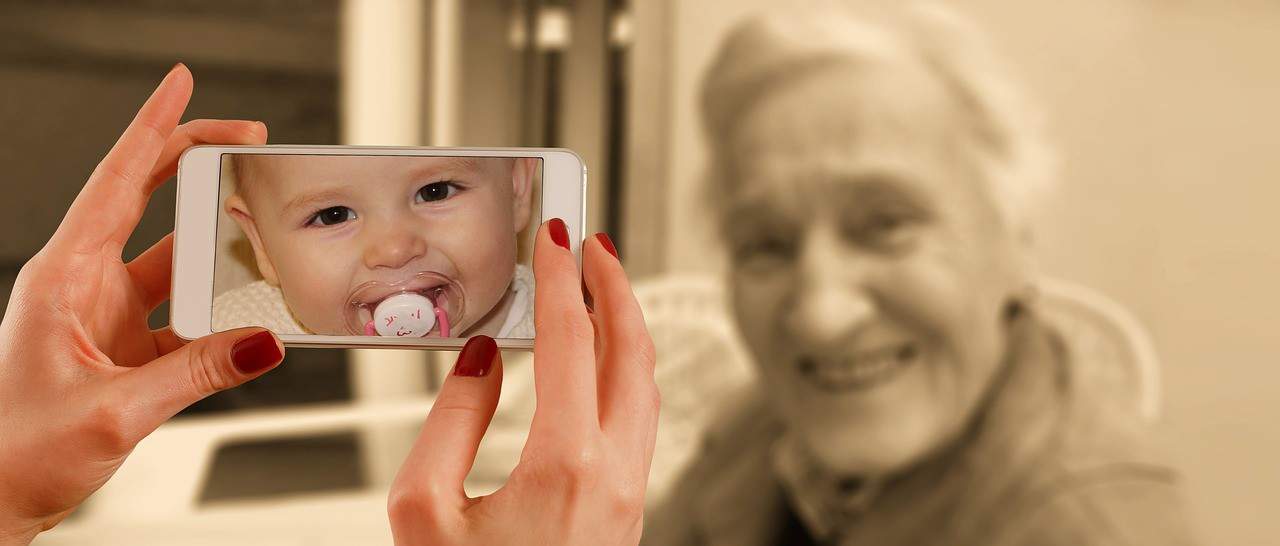Many children are interested in the history of their family although they don’t always seek out and ask about family members. Learning about their history, children can gain a sense of self by knowing more about their heritage and culture.
Holidays and family gatherings such as reunions and weddings often bring together extended family members. Children may not spend a lot of time with some of these relatives and may feel shy or a little uncertain at first. Encouraging children to politely ask questions about a person and their memories can help ease this uncertainty and provide the child with a sense of belonging.
Photos and letters were once the way to store family memories; however, technology has given us a myriad of ways to preserve our family stories. Digital photo albums can be turned into books with scripts to document the pictures. Online family trees can give children and other family members a sense of who their ancestors were and where they once lived. Audio files can be used in documenting a life in the person’s own voice. Formal and informal videos can be used to document an individual’s or family’s journey. With modern technology, family histories and e can be captured and preserved in many ways.
Children of all ages can be encouraged to listen and learn about family history.
Young children may be encouraged to draw pictures to illustrate the stories they hear. If a child is into photography, they may take portraits of the family members they visit. Older children may want to create audio or video computer files. A great way to preserve a family recipe would be to make a video of elder family members teaching the younger generation how to fix the special meal. It doesn’t matter what medium is used, the focus is on sharing and preserving the stories and memories.
Some people are more comfortable talking about themselves than others, so make sure this activity doesn’t result in a stressful or tense situation. The goal is relaxed storytelling. Guiding regular conversations with leading questions can garner a lot of information.
Here are a few traditional questions children can use to start a conversation:
- Where were you born?
- Do you have brothers and sisters?
- Who were your parents and how did they meet?
- What is your earliest memory?
- Did you have any pets when you were growing up?
Non-traditional questions can provide interesting and previously unknown information about a family member. Some non-traditional questions may include:
- What was a normal day like when you were a child? What time did you wake up? Did you have chores? What did you do on an average school day? What types of foods did you eat?
- How did you celebrate different holidays as a child? What foods were served? Where did you celebrate? Who came to the celebrations?
- What do you remember about school? Who was your best friend? Who was your favorite teacher? What was your favorite subject? What did you like the least?
- What type of music do you like? What is your favorite song? Who is your favorite singer or group?
- What happened during your life that I might learn about in history class? Were there any significant political events? Were there any wars, and if so, how were you impacted personally? Were there any large major disasters like the Kennedy Assassination or 9/11?
Gathering and sharing important family memories and stories is a tradition that should be passed to our children.
If you need more ideas for conversation-starting questions, there are a lot of examples on the web. Although this activity is designed to share family history, it can also be important to discuss family medical histories. In an age of modern medicine, knowing the family prevalence of heart disease or breast cancer can help younger generations get health screenings.
Creating a digital family history should not be a one-time activity, but should be maintained and expanded as the family grows and changes. As family members gather, it is an opportunity to expand the digital family history to capture new stories and memorabilia. A digital family history facilitates sharing photos, stories, and videos with everyone so that great, great, great, great-grandchildren can feel a connection to our lives today.


Recent Comments